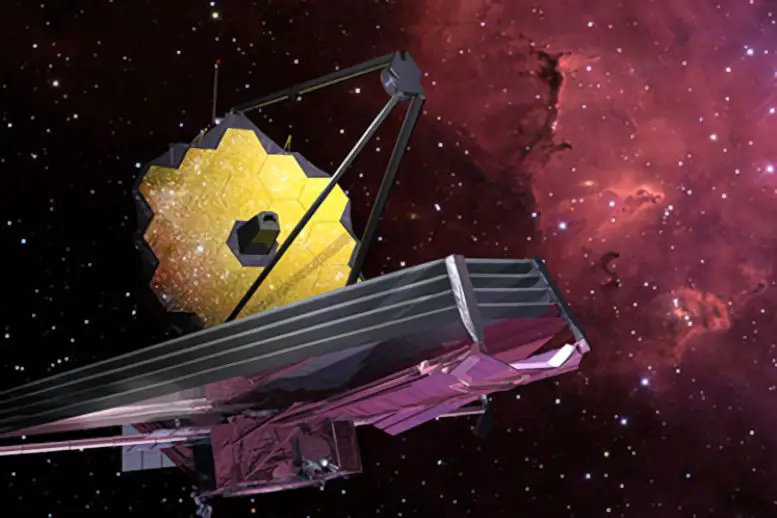Because of the tremendous capabilities of the James Webb Space Telescope, a team of researchers has made substantial progress in understanding how distant spiral galaxies grow and change over time.
The team was able to study 19 distant spiral galaxies and learn how stars are forming and changing within them using the telescope’s mid-infrared instrument, which can pierce gas and dust clouds.
“19 of the nearest galaxies to our own are being studied. We are unable to make many of these findings in our own galaxy because we are confined within it, “Professor of Physics Erik Rosolowsky, who is also a co-author of a recent report analysing data from the James Webb telescope, stated.
The scientists discovered that the stellar populations of the galaxies were young and actively creating new stars. They were able to classify photos of the galaxies depending on the objects present, including normal stars, huge star-forming complexes, and background galaxies, by analysing the infrared light emitted from dust grains at various wavelengths. Rosolowsky remarked, “It turns out this was a wonderful approach to find high-mass stars.
High-mass stars are those that “live fast, die young, and change the galaxy around them,” according to Rosolowsky, who also refers to them as “rock stars.” Large amounts of solar wind and gas bubbles are released when they form, stopping star formation in that region while agitating the galaxy and igniting star formation in other regions.
This type of bubbling froth, which keeps the galaxy from using up its fuel too soon, is actually highly important for the long life of a galaxy, according to Rosolowsky.
The team’s research also found a link between the mass of stars in a given region and their brightness, providing insight into how galaxies evolve over time. Every new star formation has a greater impact on the galaxy’s evolution throughout time.
“A star developing indicates that a galaxy is still active. There is a lot of dust and gas there, and the galaxy emits these emissions that cause the next generation of massive stars to emerge and keep the galaxy alive, “explained PhD candidate Hamid Hassani, lead author of the paper.
The researchers hope to continue their work by developing a comprehensive “galaxy atlas” utilising as many technologies as possible to chronicle the events occurring within distant galaxies.
We would be able to distinguish between what makes one galaxy unique and the defining characteristics of galaxies as a whole through the gathering of all this data and the creation of this magnificent atlas, according to Rosolowsky.
With its December 2021 launch, the James Webb Space Telescope will significantly increase our understanding of the cosmos. Researchers are able to investigate far-off galaxies and objects in greater detail thanks to its potent capabilities, which include its capacity to see deeper into space and through gas and dust clouds.”Tracking the cold and distant universe requires infrared light,” remarked Rosolowsky.

The James Webb Space Telescope offers unparalleled access to the activities taking place inside distant galaxies, whereas earlier observational technologies had limitations in their capacity to look inside them. The study of the team emphasises how crucial it is to comprehend these processes in order to comprehend how galaxies, including our own, develop and evolve.
Rosolowsky stated, “We’re getting a glimpse into what’s happening in other galaxies that have similarities to our own. It’s very intriguing because it reveals a lot about how we fit within the cosmos.
